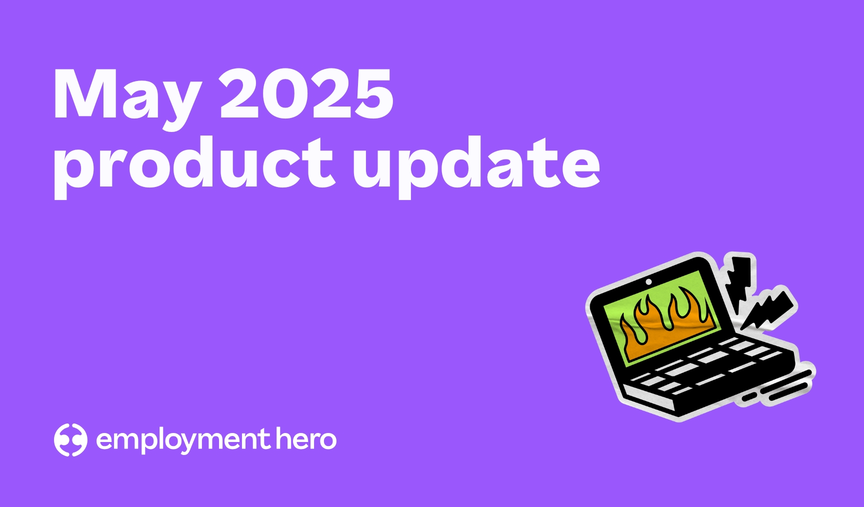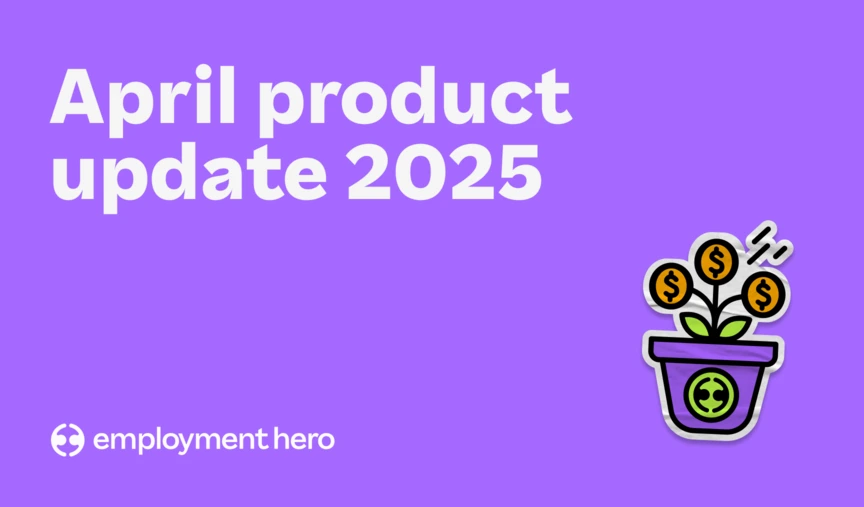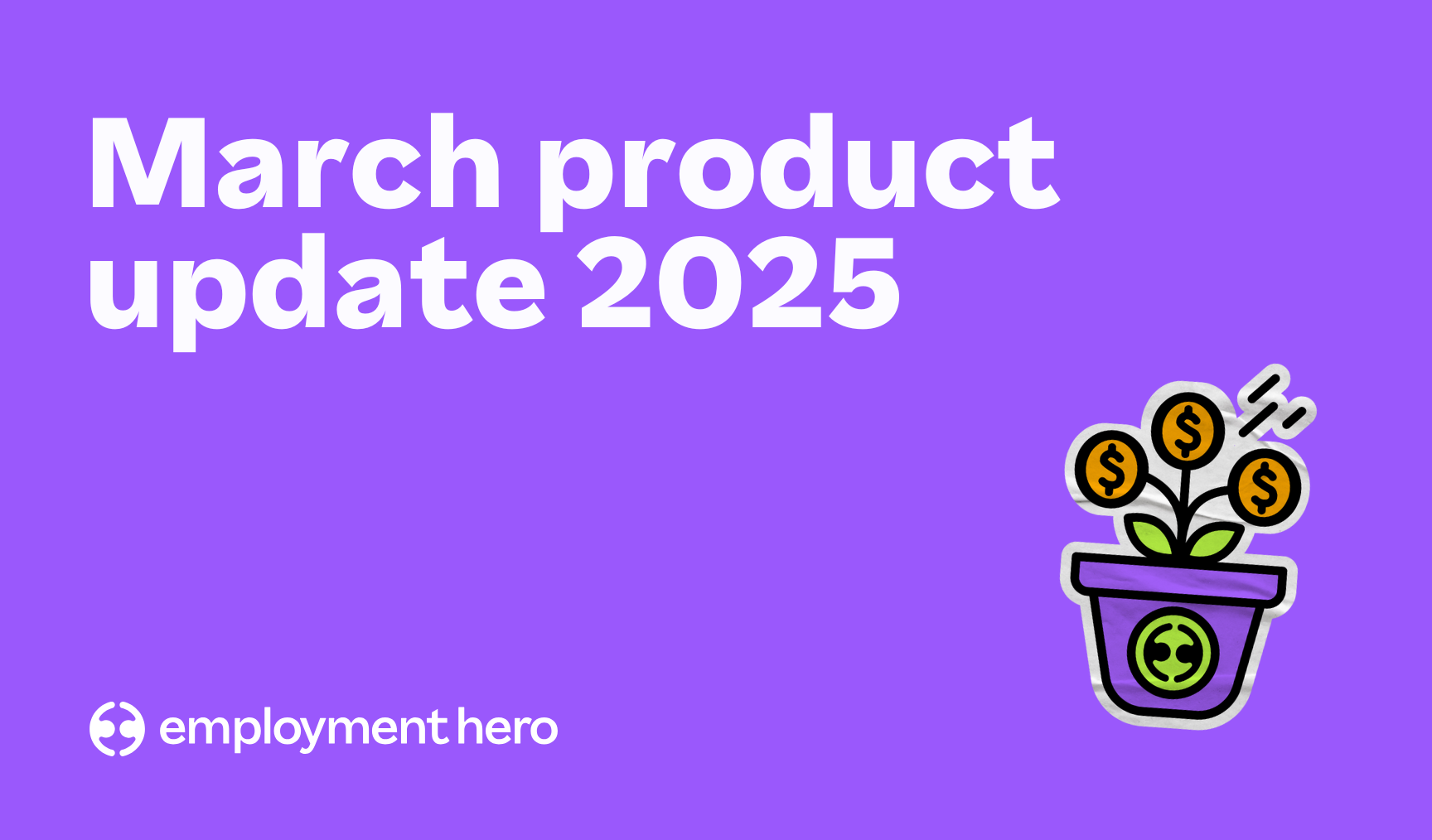Building a strong talent pipeline: Strategies for recruiting and developing future leaders
Struggling to find the right people? Learn how to recruit, develop, and retain quality employees who can become future leaders in your organisation.

Contents
In today’s rapidly evolving business landscape, building a strong talent pipeline is more important than ever. From the ‘Great Resignation’ to ‘Quiet Quitting’, and now ‘Career Cushioning’, employees are constantly on the lookout for the next best opportunity — both internally and externally.
So how can you ensure that you’re retaining and recruiting the best talent?
Developing a strong talent pipeline is a long-term strategic investment. It not only provides your organisation with a competitive advantage, but also ensures you have the right people in place to drive growth and innovation.It also encourages a culture of continuous learning and development.
For any employer, leader, manager, or HR professional — here are some effective strategies for recruiting and developing future leaders, so you can build a talent pipeline that ensures the long-term success of your organisation. Let’s get started.
What is a talent pipeline?
A talent pipeline refers to a pool of qualified potential candidates who are either ready to step into leadership positions, or can be developed into future leaders.
They possess the skills, knowledge, and experience required to fill critical roles within the company, both now and in the future. These individuals can be either internal candidates who have been identified as high-potential employees and are being groomed for leadership positions, or external candidates who have been identified through recruitment efforts and have the potential to become future leaders.
Why are talent pipelines important?
Talent pipelines are important for several reasons, such as:
1. Ensuring a steady supply of qualified candidates
By building a talent pipeline, you can ensure that you have a steady supply of qualified candidates who are ready to step into critical roles when needed. This reduces the time and cost associated with recruitment, and ensures that your company can respond quickly to changes in the industry.
If the pandemic has taught us anything, it’s that the most resilient businesses are the ones that are the most agile — having a talent pipeline helps in quickly meeting your business needs whenever it arises.
2. Developing a culture of continuous learning and development
Building a talent pipeline requires you to continually invest in the development of your employees, creating a culture of continuous learning. This helps to retain top talent and keep them engaged and motivated, while also improving your overall organisational performance.
Especially since we are now in a digital era, prioritising the training and development of your employees is crucial, or else you risk falling behind. With innovation moving so quickly, you need to take the lead in upskilling your workforce for the next decade so you have a robust talent pipeline.
3. Fostering diversity and inclusion
Having a range of perspectives and experiences represented at all levels of the business is imperative, and building a diverse talent pipeline helps ensure that. This leads to better decision-making and increased innovation. No one wants to see a homogenous leadership team, and neither is it good for business.
4. Building a competitive advantage
A strong talent pipeline can provide you with a competitive advantage to stay ahead of the curve. By having the right people in place to drive growth and innovation, your business can respond more quickly to changes, guide the business towards success, and outperform your competitors in an evolving market.
Where can you find candidates when building a talent pipeline?

Internal candidates
According to our Talent Insights Report, employees with big ambitions are working hard for them. In Australia, among those who are looking for internal opportunities, 42% are actively taking on new responsibilities, 42% are either currently in or are planning discussions with their manager and 22% are taking up self-funded training. New Zealand and the UK both show similar results too.
When it comes to climbing the corporate ladder, employees are suggesting that they’re looking for promotions and internal development rather than choosing to leave. Which is why when you’re building out your talent pipeline, you should be looking at internal candidates first. They already have all the existing knowledge, relationships, and understanding of the business’ needs — which means you don’t have to train them from scratch to fill a new role.
External candidates
Apart from searching internally within the business, you can also identify and recruit candidates externally.
The first method is through employee referrals — existing employees can also be a valuable source of referrals for potential candidates. By incentivising your employees through a referral program, you can tap into their networks to identify potential hires who may not be actively looking for new opportunities.
As a business owner or HR leader, you can also choose to leverage your own professional network, including industry associations, trade groups, and alumni networks to source candidates who have the skills and experience required for critical roles.
Social media platforms such as LinkedIn can be valuable tools for creating a talent pipeline. By leveraging social media, you can engage with potential candidates and position yourself as a desirable employer that’s worth them joining.
If your recruitment team is pretty lean, you can also partner with recruitment agencies to boost your talent pools. They have extensive networks and can help you better identify and attract the top talent you need.
Passive candidates
Passive candidates can be difficult to identify and recruit because they are not actively seeking new opportunities. They may not have their resumes posted online or be actively networking, so reaching out to them requires a more targeted approach.
However, reaching out to passive candidates can be worthwhile when building your talent pipeline, because they can bring unique skills and experience to a role. You can utilise professional networking sites like LinkedIn to build relationships with passive candidates who have the skills that are needed for a particular role.
Attending industry-specific events and conferences is also another great way of networking with potential passive candidates who may be interested in learning about new opportunities.
Want more expert advice? Download our ultimate guide to recruitment and onboarding below.
What role does diversity and inclusion play in building a strong talent pipeline?
 Diversity and inclusion plays a critical role in building a strong talent pipeline — here’s why.
Diversity and inclusion plays a critical role in building a strong talent pipeline — here’s why.
Organisations that prioritise diversity and inclusion are more likely to attract candidates from a wider range of backgrounds and experiences. This not only leads to a larger pool of qualified candidates for open positions, but also enhances company culture at the same time.
Diverse teams also bring a wider range of perspectives and ideas to the table, which can lead to more creative problem-solving and innovative thinking. Employees who feel included and valued are also more likely to be engaged and committed to their work — which will result in lower turnover rates, as well as increased productivity and performance.
The business only stands to benefit from having a well-rounded team coming from diverse backgrounds.
Strategies for building an effective talent pipeline
1. Identify your company’s long-term goals and needs
Before you get started on building a talent pipeline blindly, it’s important to first take a step back and understand what your company’s strategic direction is. Whilst keeping in mind the positions that currently need to be filled, some questions to consider are:
- Where is the company headed in the next two to five years?
- Are you planning to expand the company significantly? Or even internationally?
- How will that change impact your hiring needs and hiring process?
- Do you plan to restructure or expand a specific department?
- Are you anticipating any potential mergers or acquisitions?
It’s always better for recruiters to be prepared. Answering these questions is possibly the most difficult step in developing your talent pipeline strategy, but like we said, it’s the most important one.
Doing all this talent mapping will pay off in the long run. You’ll be able to hire the talent you need now whilst proactively preparing for the future.
2. Determine your talent acquisition strategy to fill your pipeline
Phew, now that the hardest part has been done, you can focus on filling up your talent pipeline. But where do you even start?
Filling your pipeline requires proactive recruiting. You can’t just wait for qualified candidates to apply and hope for the best. We’ve already covered the different ways you can find potential candidates above — so keep them in mind while building out your recruitment strategy.
Want more ideas? Check out our blog on creative talent sourcing strategies to expand your talent pool.
3. Assess your existing talent pool
When building out a talent pipeline, you should start by identifying high-potential employees within your own ranks. This involves assessing the skills, knowledge, and growth potential of your current employees.
Can your company fulfil their personal goals and needs? Does the current talent pool align with your company’s diversity initiatives? Assessing your talent pool allows you to identify employees that are a good fit for certain roles you’re hiring for, and what skills and qualifications you are currently missing.
With this knowledge, you can then tailor your sourcing strategy. Any roles that cannot be filled by internal candidates will then require external candidates to fill.
4. Engage and nurture potential candidates
Now that you’ve got a good idea of potential candidates in your talent pipeline, you need to start building connections with them. Your work isn’t done once you’ve got a talent pipeline filled with prospective candidates.
You need a hands-on approach when it comes to building your talent pipeline, and to focus on nurturing them throughout the hiring process. Many of them could be passive candidates who aren’t actively searching for a job at the moment.
Nurturing candidates requires recruiters to maintain a delicate balance. You don’t want to be too gentle and not get a response, or become too aggressive and irritate them. Rather than bombarding them with job listings, start off with casual conversations to get to know the candidates in your pipeline. Ask them questions about their own goals, experiences, and plans for the future.
By engaging candidates on their own terms with an honest and organic connection, you’ll provide them with a positive and informative experience. This gives them the freedom and flexibility to shape their own opinions towards the role and the company, and whether it aligns with their own career development plans.
Establishing trust and building a solid relationship early on will help make an impact when they start looking for a new role or accept your offer at the company.
5. Build a strong employer brand
Last but not least, it’s all about your employer branding. If you don’t shout about your employee value proposition (EVP), it’s just going to go unseen and you won’t be able to attract new candidates.
Ensure that your employer brand gives a clear, accurate portrayal of your company values, goals, and culture. It’s the voice and image of your business, it’s what shapes a potential candidate’s first impression of your company as a workplace. It tells them everything about what their employee experience is going to be like.
To develop your employer brand, ask yourself questions like;
- Which platforms are our potential candidates active on?
- Where would they look for job opportunities?
- What are candidates looking for in their next role as their topmost priority?
- What would win them over to us over other companies?
- What are the most attractive employee benefits that we can showcase?
- What else are we lacking in that would make us a great employer?
If you need some help with employer branding, check out our guide on how to build an EVP from the ground up.
How can employers find qualified candidates within the team?
When searching for qualified candidates within your team, you need to firstly identify what you are looking for in the role you are trying to fill. What are the skills, knowledge, experience, or certifications that you deem necessary for the job?
Next, you should evaluate the performance of current employees to identify the right talent. Use 360-degree feedback, performance evaluations and ongoing or completed projects to identify high-performing employees.
If necessary, you can also conduct skills assessments to determine an employee’s capability for the job. This could involve administering tests or asking employees to demonstrate their skills through practical tasks.
Encouraging professional development within the team through mentoring, coaching, and training programs also helps them upskill, and prepares them for future opportunities within the company. Even if their skills and experience are not entirely there yet, as long as they have the potential and the right attitude towards learning, they are still great candidates to include in your talent pipeline.
6 signs that can help managers identify future leaders

Unsure about what signs you should be looking out for? Here are our top six:
- Initiative: You want someone who is proactive and takes the initiative to improve processes, solve problems, and get things done. They don’t wait for someone else to take action and are willing to take risks to achieve success.
- Adaptability: A future leader is adaptable and can adjust to different situations quickly. They are not afraid to try new approaches and are open to feedback and suggestions.
- Strong communication skills: Employees who are excellent communicators will make great leaders. They can articulate their ideas clearly and effectively, and are also good listeners who empathise with others and understand different perspectives.
- Strategic thinking: Future leaders must have the ability to see the big picture, and develop long-term strategies that align with organisational goals. They can prioritise tasks efficiently and make decisions based on what will benefit the company the most.
- Team building: Building and managing teams is an essential part of being a leader, and can make or break an employee experience. A leader must be able to inspire others and create a positive work environment where everyone feels included, valued and supported.
- Results-oriented: Achieving results is an important metric as a leader, and employees need to be willing to put in the effort to get there. They have to be self-motivated, organised, and hold themselves accountable for their team’s performance.
What if an employee is a high performer but doesn’t want to manage others?
It is not uncommon for high-performing employees to not want to manage others. In fact, some of the best contributors in the team may not want to transition into a managerial role. Managing a team isn’t for everyone.
If an employee is firmly not interested in managing others, it’s important to respect their decision. Not everyone is suited to or interested in management, and forcing someone into a managerial role can lead to job dissatisfaction and poor performance.
However, if an employee doesn’t want to manage others at the moment but is open to leadership opportunities in the future, consider providing them with resources for growth and development. This can include specialised training, conferences, workshops and more. It helps employees advance their skills and expertise at their own pace, without having to take on management responsibilities.
Talent pipeline management is easy with Employment Hero
Building a strong talent pipeline can be difficult, but it doesn’t have to be. With Employment Hero, you can easily manage the entire recruitment process from our all-in-one, cloud-based platform.
Our applicant tracking system enables you to post to multiple job sites with a single submission — we integrate with scores of job boards. From attracting talent to onboarding, everything is done in just a few clicks. Sort applications, build shortlists, move standout applicants through the pipeline and send contracts digitally with ease.
There’s no more need to struggle with a clunky process anymore — go through the full recruitment life cycle completely fuss-free, whilst enjoying massive time and cost savings. Plus, it makes the candidate experience that much more enjoyable!
Related Resources
-
 Read more: Product Update: May 2025
Read more: Product Update: May 2025Product Update: May 2025
Follow our May 2025 product update as we share all of the latest and greatest features we’ve released over the…
-
 Read more: Product Update: April 2025
Read more: Product Update: April 2025Product Update: April 2025
Follow our April 2025 product update as we share all of the latest and greatest features we’ve released over the…
-
 Read more: Product Update: March 2025
Read more: Product Update: March 2025Product Update: March 2025
Follow our March 2025 product update as we share all of the latest and greatest features we’ve released over the…








